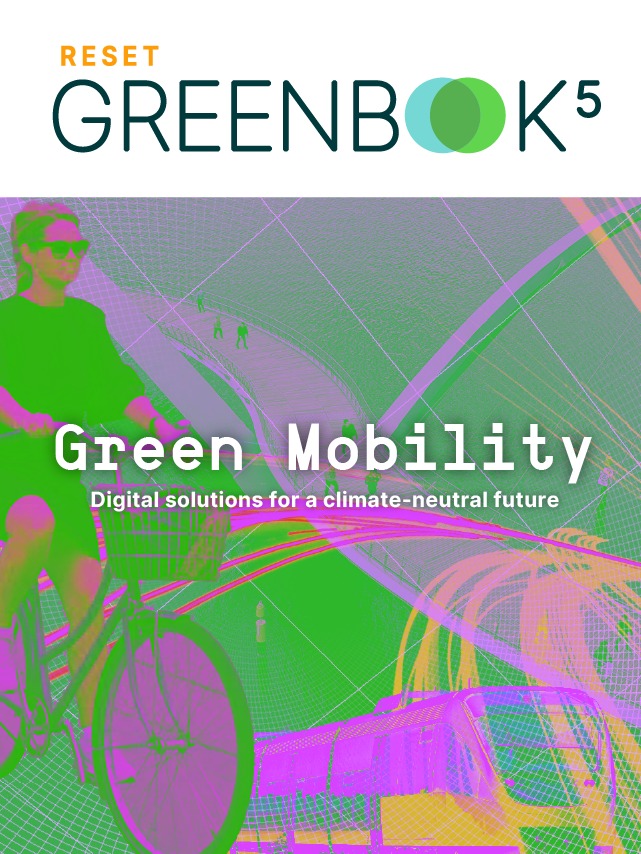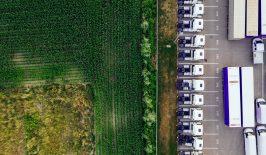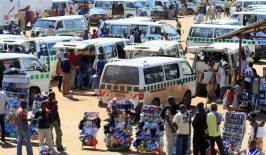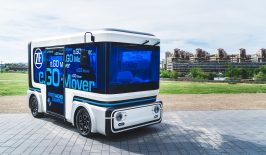One reason is certainly that many rural areas are not sufficiently integrated into public transport. This is exacerbated by the fact that subsidies and tax breaks provide additional incentives for car-heavy commuting.
From “ride-sharing banks” to BlaBlaCar
However, new solutions are emerging, especially near large cities. Some villages are offering subsidised taxis, community buses, on-demand shuttles or even shared e-cars.
Green Mobility – Digital solutions for a climate-neutral future
Autonomous vehicles, e-mobility, AI-controlled traffic planning, new modes for moving from A to B — what will the mobility of tomorrow look like?
We present the digital solutions being proposed for climate-neutral transport and logistics and discuss the new challenges of “digital mobility” in this dedicated special feature.
Another solution is ride-sharing benches. These are marked benches on main roads where people willing to ride can sit and signal to passers-by that they want a lift. While this solution is straightforward and spontaneous, it is not always reliable and, worst case, can lead to being stuck on a bench instead of attending a morning meeting.
By contrast, platforms such as BlaBlaCar are more reliable. The digital car-sharing platform has become increasingly popular in recent years, especially for irregular journeys over longer distances. BlaBlaCar has been in business for more than 17 years and is has around 35 million members. The offer to users is simple: drivers can enter their route, preferred driving style (chatty or quiet) and the number of free seats via an app. Travellers looking for a ride then submit a request.
However, for people who commute the same distance to work every day, BlaBlaCar is quite burdensome. For example, there may not be a ride at a specific time each morning, with your specific preferences.
Ridesharing for regular customers
This is where new car-sharing platforms come into play. Companies such as crowd-based carpooling platform PENDLA want districts, cities and municipalities to support regular carpooling. Just like BlaBlaCar, drivers can add their routes. The app then automatically compares their route with those of other users to find the best match before displaying it on a map. The service is tailored to regular trips, i.e. drivers can choose which days of the week they drive the route and other users can join these trips on a regular basis. A key aspect is that users can see how many other people are travelling in the same direction.
What also distinguishes PENDLA from other car-sharing services is that the counties, cities and municipalities bear the costs for the introduction of the service in their area. This makes the service more affordable for fur users, increasing the impetus to use it.
The path to sustainability is more than one passenger per car
In any case, in the EU, the average car carries less than two people. And since the daily commute to work accounts for such a large share of car journeys, that’s quite a few half-empty cars travelling the same distances every day. The sustainable option would look quite different.
With each additional passenger, the journey becomes more CO2-efficient. Regular carpooling can significantly reduce the negative impact of the mobility sector on our environment.
Another impact of a well-established carpooling service can also be that it reduces car dependency in the long run. If carpooling is a convenient and affordable option, it may eventually eliminate the need to own a car. This in turn increases the chance that other journeys will be made by public transport, and, with any luck, drives down the environmental impact associated with manufacturing cars.
Reduce emissions and increase social contacts
As a study by BlaBlaCar on the social effects of carpooling has shown, there are some positive side effects: 87 percent of members report an enriching exchange. 37 percent of members who carpooled more than five times in the past year stayed in touch with at least one BlaBlaCar member. 55 percent report feeling part of a community, and this figure rises to 74 percent for members who made more than 10 trips in the past year. If casual trips, which BlaBlaCar specialises in, already have such a big impact on those travelling together, it can be assumed that frequent co-pilots also build relationships with each other.
Even further, car sharing can also significantly reduce traffic congestion, leading to less congestion and fewer accidents, while also reducing the need for parking infrastructure.
However, of course, the benefit that probably appeals to most new users first is the cost reduction. According to their own information, PENDLA users can save up to 75 percent of their travel costs through gas and parking fees, making ridesharing not only ecologically but also economically much more sustainable.
A joint step in the right direction
Ridesharing can be an extremely effective tool in reducing our emissions. Moreover, similar to shuttle services, it can fill gaps in public transport and, in the best case, also improve local connectivity in the long term.
However, trust is still a challenge in ridesharing, as people must book rides with strangers, at least at first. While many platforms — like BlaBlaCar — work with a rating system to highlight trustworthy drivers, unfortunately, this is not a 100 percent fail-safe system; racism, missing payments or last-minute cancellations cannot be completely ruled out.
And, as long as company cars are provided by companies and commuting kilometres with one’s own car are tax-privileged, incentives for carpooling are often lacking. For a real mobility turnaround, political change needs to speed up.









